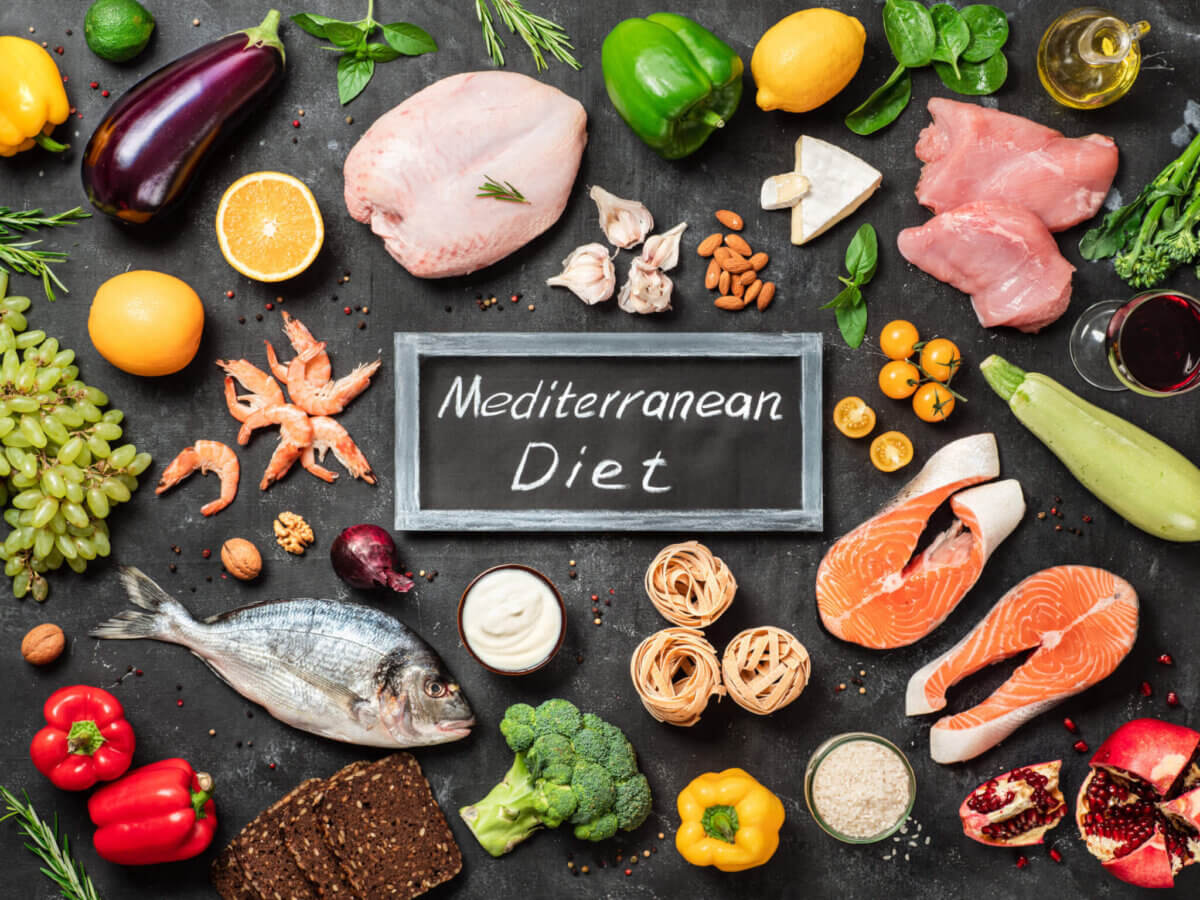DALLAS — The Paleo and Keto diets, favored by celebrities like Kim Kardashian and Gwyneth Paltrow, are the worst for heart health, according to a scientific study of 10 popular dieting trends. In contrast, the Mediterranean, pescatarian, and vegetarian diets, adopted by stars like Beyoncé, Selena Gomez, and Harry Styles, are far better for cardiovascular fitness.
A new report from the American Heart Association (AHA) ranked popular diets based on their impact on heart health. These plans included:
- DASH: Describes an eating pattern that’s like the Dietary Approaches to Stop Hypertension (DASH) diet, emphasizing vegetables, fruits, whole grains, legumes, nuts and seeds, and low-fat dairy and includes lean meats and poultry, fish and non-tropical oils.
- Mediterranean: This pattern limits dairy; emphasizes vegetables, fruit, whole grains, legumes, nuts and seeds, fatty fish and extra virgin olive oil; and includes moderate drinking of red wine.
- Vegetarian/Pescatarian: A plant-based eating pattern that includes fish.
- Vegetarian/Ovo/Lacto: Plant-based eating patterns that include eggs (ovo-vegetarian), dairy products (lacto-vegetarian) or both (ovo-lacto vegetarian).
- Vegetarian/Vegan: A plant-based eating pattern that includes no animal products.
- Low-fat: A diet that limits fat intake to less than 30% of total calories, including the Volumetrics eating plan and the Therapeutic Lifestyle Change (TLC) plan.
- Very low-fat: A diet that limits fat intake to less than 10% of total calories, including Ornish, Esselstyn, Pritikin, McDougal, Physicians Committee for Responsible Medicine (PCRM) diets. Some may also be considered vegan.
- Low-carbohydrate: A diet that limits carbohydrates to 30-40% of total calorie intake, and includes South Beach, Zone diet and low glycemic index diets.
- Paleolithic: It excludes whole and refined grains, legumes, oils and dairy.
- Very low-carbohydrate/ketogenic: Limits carbohydrate intake to less than 10% of daily calories and includes Atkins, ketogenic and the Well-Formulated Ketogenic diets.
The results placed diets such as the Mediterranean, pescatarian, and vegetarian in the top tier for heart health. DASH diets, which are rich in potassium, calcium, and magnesium and designed to control blood pressure, were considered the pinnacle of healthy heart eating. Jessica Simpson and Jennifer Hudson are among the American singers who subscribe to these diets.
However, extreme dieting fads like the keto and paleo diets were found to be detrimental to heart health due to reduced fiber intake and a lack of limits on consuming saturated fats. Experts say that although these diets may result in short-term weight loss, they are not sustainable in the long run and could cause lasting damage.
Dr. Christopher Gardner, chair of the writing committee for the new scientific statement and the Rehnborg Farquhar Professor of Medicine at Stanford University, explains that disinformation spread about dieting techniques on social media means we are more confused than ever about which diets are good or bad for our health.
“The number of different, popular dietary patterns has proliferated in recent years, and the amount of misinformation about them on social media has reached critical levels. The public — and even many health care professionals — may rightfully be confused about heart-healthy eating, and they may feel that they don’t have the time or the training to evaluate the different diets. We hope this statement serves as a tool for clinicians and the public to understand which diets promote good cardiometabolic health,” Dr. Gardner says in a media release.

The AHA’s new healthy heart statement rates how well popular dietary patterns align with its dietary guidelines for good cardiometabolic health, a group of factors that affect our metabolisms and the risk of heart and cardiovascular disease. These factors include blood glucose, cholesterol and other lipids, blood pressure, and body weight. Abnormal levels in one of these factors might increase the risk of heart disease, while abnormalities in more than one factor raise these risks even more and potentially lead to deadlier diseases.
The AHA’s dietary guidance comprises 10 key features of a dietary pattern to improve cardiometabolic health, emphasizing limiting unhealthy fats and reducing our consumption of excess carbohydrates. The balance the guidance encourages aims to limit the risks of health conditions like Type 2 diabetes and risk factors such as obesity, which increases the risk of cardiovascular disease.
The new scientific statement, which is the first ever to analyze how closely popular dieting techniques adhere to this guidance, reviewed the defining features of long-term dietary patterns and split them into 10 different categories. These categories include DASH-style diets, Mediterranean-style diets, vegetarian and pescatarian diets, vegan diets, low and very low-fat diets, low-carb diets, Paleolithic diets, and Ketogenic diets. Each diet was evaluated against nine of the 10 features in the AHA’s guidance for a heart-healthy eating pattern.
Defining features of the various diets were scored for how well they aligned with the guidance, with one full point for fully meeting, 0.75 points for mostly meeting, and 0.5 points for partially meeting the guidance. The resulting scores were calculated and adjusted to arrive at a rating between one and a hundred, with 100 indicating complete adherence to the AHA’s dietary guidance.

The DASH diet gets a perfect health score
Experts found that the reviewed diets varied widely in their scores, ranging between 31 and 100, and grouped the diets into four tiers of heart healthiness. They discovered that the highest-ranking heart-healthiness diets, with scores above 85, were flexible and provided a broad range of healthy foods to choose from.
The DASH-style (Dietary Approaches to Stop Hypertension) diets, designed to treat or limit high blood pressure, obtained a perfect score in meeting all of the AHA’s guidance. These diets tend to be low in salt, added sugar, alcohol, tropical oils, and processed foods, and rich in non-starchy vegetables, fruits, whole grains, and legumes. Protein typically comes mostly from plant sources (such as legumes, beans, or nuts), along with fish or seafood, lean poultry and meats, and low-fat or fat-free dairy products.
The Mediterranean-style diet, which limits dairy and emphasizes vegetables, fruit, whole grains, legumes, nuts and seeds, fatty fish, and extra virgin olive oil—and includes moderate drinking of red wine—also received a high heart rating. This type of eating helped Big Lebowski actor John Goodman, 70, lose an impressive 14 stone by following the diet, which is also adhered to by Spanish actress Penélope Cruz, 48, and American actress Cameron Diaz, 50.
The pescatarian diet, in which the only meat consumed is fish, also scored high in terms of heart health and counts singers Beyoncé, 41, Harry Styles, 29, Victoria Beckham, 49, and Miley Cyrus, 30, among its followers. Similarly, the vegetarian diet, followed by the likes of Sir Paul McCartney, 80, Zendaya, 26, and Russell Brand, 47, was included in the top tier of diets when including dairy products and eggs.
“If implemented as intended, the top-tier dietary patterns align best with the AHA’s guidance and may be adapted to respect cultural practices, food preferences, and budgets to enable people to always eat this way, for the long term,” Dr. Gardner says.

The second tier of diets, with scores between 75 and 85, included vegan and low-fat diets, which encourage eating fruit and vegetables, grains, and nuts while limiting alcohol consumption and food and drink with added sugar. However, the experts acknowledged the long-term difficulties with adhering to these strict diets when eating out and warned vegans like actors Olivia Wilde, 39, and Joaquin Phoenix, 48, as well as ex-heavyweight champion boxer David Haye, 42, that they could risk a vitamin B-12 deficiency, which could cause red blood cell abnormalities leading to anemia, by following a strict vegan diet. They recommended taking supplements.
Very low-fat and low-carb diets formed the third tier of diets, with scores between 55 and 74. Some very low-fat diets were linked with the potential slow progression of fatty artery build-up. Both diets were also said to restrict food groups emphasized in the AHA’s guidance.
The lowest-ranked diets, with scores below 55, were found to be the Paleolithic and very low-carb/Ketogenic diets. The Paleo diet, followed by actors Matthew McConaughey, 53, and Channing Tatum, 43, is an eating plan based on foods humans might have eaten during the Paleolithic Era, around 2.5 million to 10,000 years ago. It focuses on foods our ancestors could obtain through hunting and gathering and avoids foods that came after the agricultural revolution, such as grains, legumes, and dairy products. Subscribers to the Keto diet eat plenty of fat and very few carbs, so their bodies enter a fat-burning mode known as ketosis. This unusual dieting technique has been tried by the Kardashian sisters, actress Halle Berry, 56, and basketball superstar LeBron James, 38.
These restrictive diets, though helpful in the short term for losing weight, can result in reduced fiber intake and a lack of restrictions on saturated fats, which could increase the risks of cardiovascular disease.

“There really isn’t any way to follow the Tier 4 diets as intended and still be aligned with the AHA’s Dietary Guidance. They are highly restrictive and difficult for most people to stick with long term. While there will likely be short-term benefits and substantial weight loss, it isn’t sustainable. A diet that’s effective at helping an individual maintain weight loss goals, from a practical perspective, needs to be sustainable,” Dr. Gardner continues.
“We often find that people don’t fully understand popular eating patterns and aren’t following them as intended,” the study author concludes. “When that is the case, it is challenging to determine the effect of the ‘diet as intended’ and distinguish that from the ’diet as followed.’ Two research findings that seem contradictory may merely reflect that there was high adherence in following the diet in one study and low adherence in the other.”
The AHA’s guidance did not take into account commercial dieting techniques such as Weight Watchers or Noom, short-term diets intended to be followed for less than 12 weeks, practices such as intermittent fasting or time-restricted eating, or diets designed to manage non-cardiovascular conditions.
South West News Service writer James Gamble contributed to this report.


The representation of paleo is erroneous. Paleo, as described by serious researchers, Loren Cordain and others, is a high vegetation diet with a wide variety of greens, tubers, roots, mushrooms, seeds, nuts, free range animal, fish and insects. By today’s standards it would be a low fat diet and the saturated fats would have a more natural ratio of saturated fatty acids than is found in feedlot beef. It is highly anti-inflammatory, high in omega 3 fatty acids and includes no processed foods (concentrated oils from seed and legume, sugar and flour). Dr. Terry Wahls, M.D. has used a high vegetation paleo diet as part of a strategy to reverse symptoms of M.S., went from a wheel chair to bicycle riding in less than 2 years. To deny paleo as a healthy diet is to deny evolution.
Right ON
Too bad “Whole food plant based” diet is never mentioned. It’s not the same as Vegan. AHA is full of bull and cow… lobbyist.
Flawed Study…..All diets that include highly processed foods, meats that are raised without their natural foods, vegetables, and grains that are raised by using chemicals on land that is basically dead, will not provide good nutrition.
Goat and sheep milk and cheese consumed in reasonable quantities will automatically set your digestive system to KETO. Check out the Blue Areas, and see what they eat.